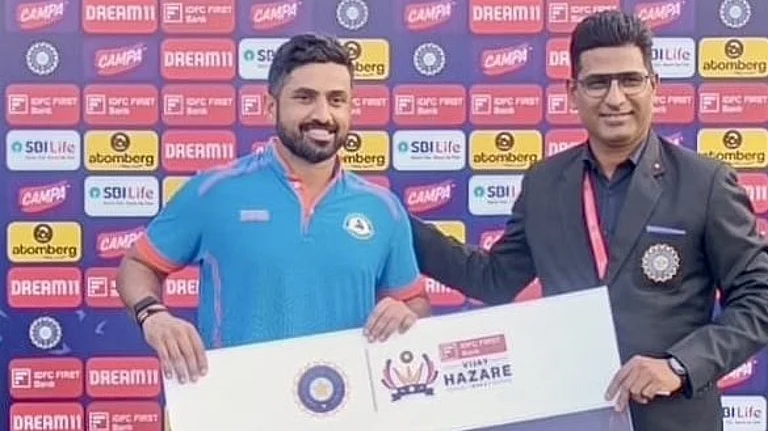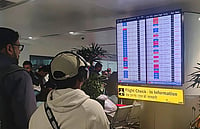
What HKB found was a lack of a delivery mechanism of modern knowhow and practices to farmers, leading to lower yields. The availability of quality agri-inputs like fertilisers and pesticides is also poor. So, HKB has stationed 3-4 trained agronomists in each of its 33 outlets across north India to provide farmers with free consultation. "The consumers see enormous value in this service. It's part of an education process that will enable them to use modern methods. We seek to empower them by providing all-encompassing solutions to them," says Rajesh Gupta, business head, HKB. Hopefully, such farmers will become consumers of other products in the near future.
The second—and the less tricky—part is to spread awareness to pull them up from the level of aspiring for consumer goods to one where they begin to consume them. So, HLL has created an army of footsoldiers—or direct marketers—who do this job in villages. One of them is Sreelata, wife of a landless agricultural labourer, who stocks HLL products like Breeze, Lux, Wheel and Brooke Bond in a tiny hutment in Chellore village in Andhra's Nalgonda district. She earns Rs 800-1,000 a month and help locals realise the virtues of safe and hygienic necessities (read HLL brands). "I work four hours a day and feel gratified that I am increasing awareness and augmenting my family income," feels Sreelata.
As part of HLL's Shakti project, the thousands of shakti vanis like Sreelata help boost the company's topline. In Andhra's Mutthireddygudem village, Settupathy Lata holds an audience of women spellbound while informing them about issues that can be addressed by HLL products. Explains Dalip Sehgal, executive director, HLL: "It has a novel impact, which is brought about by product-linked programmes, a kind of an engagement that touches the rural populace." The lesson here is that a "continuous reciprocal engagement" can be part of a long-term success strategy to build a loyal rural customers' base.

A Choupal Sagar near Nagpur
The third—and the logical conclusion—is that the above, and similar, efforts result in an increase in the disposable incomes of the rural consumers. C.K. Vaidya, MD, Godrej Agrovet, openly says he sees an opportunity in all the various problems that plague the Indian agrarian sector. "Especially in being able to increase the overall productivity of Indian agriculture which, with twice the arable land available compared to China, still produces less than double the grain that China does," he notes.
That seems to be the underlying theme of ITC's Choupal Sagars, which also double up as procurement centres for wheat, pulses and soyabean. "After accessing relevant information about the weather and prevalent prices on our e-choupal kiosk, a farmer can take an informed decision to sell to us. He is ensured a fair and immediate payment without the average 6 per cent trader's commission," says Sivakumar.
With its 6,400 e-choupals and 160 sourcing hubs, ITC is keen to increase procurement volume targets to much higher than 2 million tonnes in 2004-2005. "Sorghum, maize, barley, coffee and shrimps are new categories we will actively look at sourcing at in the future," adds Sivakumar. Agrees M.S. Swaminathan, the father of the green revolution in India: "A model that increases the purchasing power of an average Indian farmer leads to job-led growth and is dependent on technology-led information dissemination so that farmers can make informed choices is an ideal (corporate) model. "
However, as usual, there is the other side of the coin that reflects the heightened corporate interest in rural India in a poor light. Suman Sahay of Gene Campaign terms it as a "wholesale holocaust." "In the absence of any legally enforceable regulation, the partnership between two unequal partners—where one is a large corporate and the other may be a local adivasi community—can be highly detrimental to both the overall food security of the country and to local farming communities," she maintains.
Vandana Shiva of Navdanya joins the refrain, and feels that large retailers drive down prices whenever they enter the fray, and, therefore, will not benefit the farmers. "People like ITC want to do away with the mandi system so that they can influence farmers and get away with giving them lower rates. HLL has turned self-help groups across the country into their marketing arms. Thus, the farmers get trapped in vicious circles of purchasing a condition fostered by unchecked corporate involvement in the rural sector." Swaminathan adds that "a strict code of conduct must be followed by companies and their contracts with farmers should specify the quantity of produce contracted and the buying criterion, and prices should be fixed according to market forces."
Therefore, the government's intervention is critical to create a win-win situation for both the farmers and corporates. Especially when one realises that such partnerships have failed in the past. Concluding on a positive note, the new corporate models to woo the rural consumers can help enlarge the size of the Indian middle class. That will force foreign investors to look at India in a more serious vein. If these models succeed, the middle class may actually include over 500 million Indians in the near future.

























